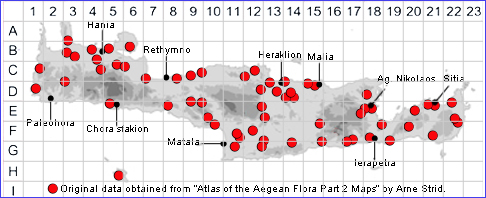
SPECIES DESCRIPTION
SINAPIS ALBA subsp. ALBA
Family and Genus:- See- CRUCIFERAE
Common Names:- White mustard
Homotypic Synonyms:- None
Meaning:- Sinapis (Gr) A name used by the Greek philosopher Theophrastus for
mustard.
Alba (L) Bright, white.
General description:- Herbaceous annual.
Stems:-
1) Up to 80 cm, erect, branched, usually with stiff, deflexed hairs (rarely glabrous).
Leaves:-
1) Alternate, lyrate-pinnatifid or pinnate.
Flowers:-
1) Yellow, from 10-20 mm diam., joined together in racemes from 5-20 cm long.
2) Corolla, with 4 free petals, with a long claw.
3) Calyx with 4 free, spread out, yellow green sepals.
Fruit:-
1) Siliqua, 20-40 x 3-4 mm; valves usually hispid; beak 10-30 mm.
Key features:-
1) Siliqua, with 4-8 seeds. Beak, strongly compressed, usually longer than the
valvar portion of the siliqua.
3) Sepals, more than 4·5 mm.
4) Leaves, variably covered with short, stiff hairs, but scarcely scabrid.
Habitat:- Weed of cultivated fields, olive groves, roadsides and waste-ground, often
gregarious. 0-800 m.
Distribution:- Throughout Greece, but rare in the interior north. - Widespread and
probably native to the Mediterranean area and SW Asia. Widespread and common
on Crete.
Flowering time:- Mid-Mar to late May, occasionally later.
Photos by:- Steve Lenton
